About the iPhone 13 Pro
Even if it doesn’t offer MUCH to justify switching from the iPhone 12 Pro, the iPhone 13 Pro is one of the greatest iPhones in 2021, as you will know in this iPhone 13 Pro review. The battery performance of Apple’s Pro iPhone is the finest we’ve observed, then you get outstanding results, a fantastic camera suite, and a super-smooth 120Hz display. While none of the enhancements for 2021 are very significant on their own, they combine to provide a superb digital experience.
If you already possess an iPhone, the iPhone 13 Pro is likely to be a significant upgrade – unless you own the iPhone 12 Pro or Pro Max from last year – with enhancements to practically every function.
The design, on the other hand, is comparable to that of the iPhone 12 Pro. The phone has a sleek texture on the back and corrosion resistance corners, making it seem properly upscale.
The new A15 Bionic CPU, along with 6GB of RAM, provided more than enough energy to operate even the heaviest and energy-consuming programs from the Apple App Store. Storage starts at 128GB, with choices up to 1TB for those who want more.
iPhone 13 Pro: Pros and Cons
- Excellent performance
- Long battery life
- Awesome macro photography mode
- Triple-Lens Rear Camera
- Loud stereo speakers
- Limited design modifications
- Expensive
- 4K ProRes is only available in 128GB
- Fast charging limited to 20W
- Compact but weights a lot
The iPhone 13 Pro also has a wonderful camera, with a diverse array of cameras that can easily support both day and night photography. You may also photograph at a range of distances using the zoom and macro cameras.
So, while the iPhone 13 Pro is a fantastic smartphone, so are all of the iPhone 13 phones, and if your wallet won’t stretch to the Pro, the standard iPhone 13 lacks just a handful of the Pro’s specs and capabilities, so you could find the cheaper model suits you just fine.
However, if the iPhone 13 Pro’s 120Hz screen, enhanced cameras, and a bit more RAM or storage have piqued your interest, it might be the greatest iPhone for you, especially if you really do not need the larger display capacity of the iPhone 13 Pro Max.
Design
The iPhone 13 Pro is the company’s most luxury gadget without a Max in its name, and unlike the iPhone 13 Pro Max, it’s a more practical design for one-handed operation. If you’re searching for a new iPhone in the mid-size range, this model, or the iPhone 13, should be ideal. The iPhone 12 Pro’s design has been polished, although the modifications are minor.
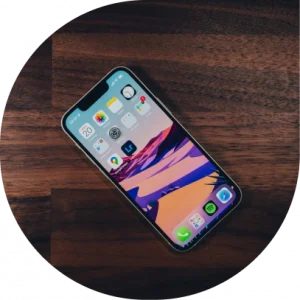
It has stainless borders, a matte classic look on the rear, and both front and backs Apple Ceramic Shield glass. When contrasted to an iPhone without the cover, Apple claims it is four times less prone to breakage when dumped. When opposed to the iPhone 13’s fused quartz, the matte surface on the back feels decidedly expensive.
We’ve noticed that the iPhone 13 Pro’s design feels comfortable in the palm; it has a little more heaviness than the iPhone 13, which makes it fit nicely in our hand.
The iPhone 13 Pro’s back display protrudes quite a little from the body, which may be a concern for some – it’s most obvious when you set the device down on a desk, so anticipate some back and forward between if you really want to text on the screen while it’s resting. The start button is located on the handset’s right-hand side, while the mute selector, audio controls, and SIM tray are located on the left side. The loudspeakers and a Lightning charge connector are located on the handset’s bottom edge.
The phone comes in Graphite, Silver, Sierra Blue, or Gold. The Sierra Blue option is new this year, and it’s one of Apple’s most eye-catching new hues in a long time.’ Unless you want a Pro phone that sticks out, this is an excellent option.
Display
The iPhone 13 Pro has a 6.1-inch Super Retina XDR OLED display, just like the iPhone 13. This screen doesn’t have the highest pixel-per-inch rating of the iPhone 13 lineup (that honor goes to the iPhone 13 small), but it does have 460ppi, which means the visual quality is sharp.
The inclusion of a 120Hz maximum frame rate, which implies the on-screen display updates 120 times per second for a more smooth performance than prior iPhones, is a huge enhancement; it’s most visible while navigating through settings or system programs. It’s a progressive refresh rate, which means it adjusts and gets optimized based on the apps you’re operating – for example, most videogames utilize a 120Hz refresh rate, while browsing an ebook may require 1Hz. When you’re using applications that don’t capitalize from a fast refresh rate, the goal is to preserve battery life.
We’ve discovered that the new screen technology performs well, however its distribution is now restricted due to the fact that many apps aren’t built for 120Hz. Developers have the ability to include this feature, and we anticipate seeing it integrated into more apps in the future. However, the quicker refresh rate performed best with apps that supported it, and there’s a noticeable difference when navigating through Apple’s menus or tools. It’s not a compelling incentive to upgrade on its own, but it’s a useful feature that will grow more so when more applications are supported.
On the iPhone 13 Pro, Apple has also decreased the size of the hole. Although there is no under-display camera, the notch is 20% narrower than on the iPhone 12 Pro, giving you a bit more display space to deal with. Every little bit helps, but you’re unlikely to understand until you compare this phone to the previous year’s model.
Performance
The iPhone 13 Pro, like so many new iPhones, is powered by Apple’s A15 Bionic chipset, which the firm boasts is the greatest smartphone CPU currently available. It handled every program we launched with simplicity throughout our evaluation, and there were no skipping difficulties. On the phone, the gameplay was likewise seamless, with each title launching promptly.
If you have an iPhone 12 or a current Android phone, you won’t notice much of a distinction here, but if you’re updating from an earlier iPhone, you will. The A15 processor, together with 6GB of RAM, keeps things running smoothly. The iPhone 13 Pro scored 4718 on Geekbench 5 software, which is a few points better than the iPhone 13, which scored 4688. It also outperforms the iPhone 12 Pro, which received a score of 3669.

These changes won’t be evident in regular use, but if you’re straining your phone to its limits, you might enjoy the extra oomph the iPhone 13 Pro has to give. The iPhone 13 Pro comes with storage options of 128GB, 256GB, 512GB, or 1TB.The iPhone 13 Pro is 5G-ready, which means you’ll be able to have the next network protocol if your plan allows it and you’re in a covered location.
The software runs smoothly on the iPhone 13 Pro, and we didn’t encounter any issues throughout our testing. We expect fresh software upgrades to be available for the iPhone 13 Pro in the coming years; iOS 15 is functional with iPhones dating back to the iPhone 6S from 2015, so you can predict at least five years of versions.
Battery
The iPhone 13 Pro has higher battery life than prior Pro devices from Apple, but it’s not as excellent as the 13 Pro Max, which is this year’s top-end iPhone. We discovered that the iPhone 13 Pro can endure a full day of typical use. You may notice that your phone requires recharging before the end of the day if you push it a little harder. The phone would usually have 10-20% battery life remaining when we placed it on charge at the end of the day on lower-use days – this is a much better battery life than the iPhone 12 Pro and previous Pro devices before it.
The phone is equipped with rapid charging up to 20 watts (depending on the charger), which should allow you to charge it from empty to full in about an hour. We discovered that 15 minutes of charging offered us 25% battery life, whereas 30 minutes gave us 53%.
That isn’t the fastest charging we’ve seen in a smartphone – some of the latest Android devices can charge at 120W or even quicker – but it will do for most people. However, because Apple continues to fight e-waste, there is no charger included in the package, so if you don’t already have one, you’ll need to buy one.
Camera
The iPhone 13 Pro has three 12MP cameras: a main wide-angle camera with an f/1.5 lens, a telephoto shooter with an f/1.8 aperture and 3x optical viewfinder, and an ultra-wide cam with an f/1.8 aperture and a 120-degree field of view.
A 3D LiDAR scanner that measures depth is also included. This increases the precision of Portrait mode bokeh effects by discriminating between the subject and their backdrop, making focusing more precise. In addition to photos, the scanner may be used with augmented reality apps.
The main camera is excellent; while it does not appear to vary significantly from the iPhone 12 Pro’s primary camera on paper, it does have some significant improvements that make it one of the greatest smartphone
cameras. The overall image quality is great, with photos were taken in bright light displaying lots of tonal qualities, as well as a wonderful night option for shooting in low light.
The iPhone 13 Pro’s telephoto camera has 3x optical zoom, compared to 2x on the iPhone 2020 – the difference isn’t significant, but the clarity of zoomed-in photographs is excellent.
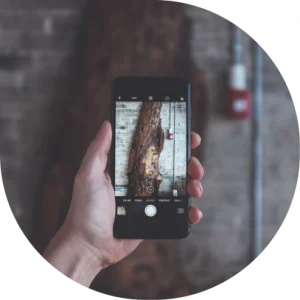
This year, Apple added sensor shift autofocus to the Pro model, making it simpler to rapidly snap a photo without it being blurry. This is definitely better than the iPhone 12 Pro’s zoom, although it’s worth noting that optical convergence is also accessible on the less expensive iPhone 13.Pictorial Styles is another new feature on the iPhone 13 Pro, and it lets you apply creative effects to your photos, with options including Rich Contrast, Bright, Toasty, and Chill.
Unlike filters, they make alterations to certain portions of a photograph rather than the entire image. The concept is that you may give your photos a unique style, such as warming up portraiture or increasing the colours in vistas.
This won’t impact how you photograph with the primary camera, but it’s a great tool to play about with. Although it’s tough to see how this varies from a typical filter, it might be useful in your photographic repertoire.
On the outside of the phone is a 12MP f/2.2 wide camera (‘wide’ is how Apple refers to its primary phones, as opposed to ‘ultra-wide’), which we found to be useful for taking selfies during video chats. It doesn’t have as many features as the back camera, but it’s easy to use Landscape orientation and obtain a fantastic photo.
If you have a newer iPhone, don’t anticipate any improvements to the selfie camera, but you’ll still receive excellent photo quality in all settings.
The iPhone 13 Pro can capture 4K video at 24, 30, and 60 fps, while Full HD video can be recorded at 30, 60, 120, and 240 images per second.
Price
The iPhone 13 Pro, like the iPhone 13, is great. If you’re looking for a less expensive alternative to the Pro, the iPhone 13 is your best bet, as it has many of the Pro’s capabilities. If you’re on the fence regarding the Pro, compare it to the iPhone 13 to evaluate if the extra functions are truly necessary.
In the United Kingdom, the iPhone 13 PRO costs £ 934.9, £ 1,049.00, and £ 1,399.00.
Summary
Buy it if the new camera features appeal to you. Fresh features like Cinematic Mode and ProRes will appeal to film shooters searching for more ‘pro’ tools, while the iPhone 13 Pro’s macro mode provides a new and fascinating photography alternative. The iPhone 13 Pro’s battery life is greater than we’ve seen on prior iPhones from the firm, with the phone lasting a full day of regular use. Every iPhone 13 model is powerful, but the iPhone 13 Pro is one of the most powerful smartphones we’ve ever used. This might be the phone for you if you want to push your phone to its limits on a daily basis.
Other News
Google Pixel 6 Pro
If you are in search of a Google phone, then the Google Pixel 6 pro has the potential to be the best Android phone available. You will be getting a 6.7-inch display, 12GB RAM, 10 to 120 refresh rate, and 512 GB storage for only around £899.
Apple Watch 7
Apple Watch features the always-on retina display and comes up with a circular design. The watch is famous for providing you with great convenience by remaining charged for a longer duration and also has high durability in the market so you can expect to purchase it for only £399.

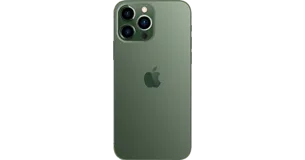
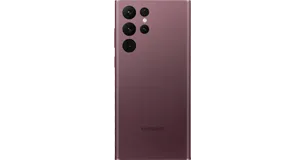
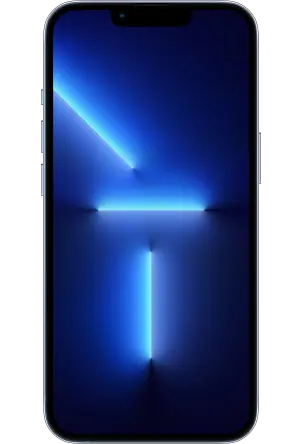
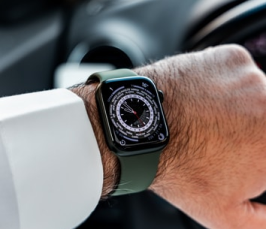
 All you need to know about Refurbished Devices
All you need to know about Refurbished Devices Dell XPS 13 Laptop Review
Dell XPS 13 Laptop Review Lenovo Ideapad 3i Review
Lenovo Ideapad 3i Review HP Spectre x360 Review
HP Spectre x360 Review Apple MacBook Air 2022 Review
Apple MacBook Air 2022 Review